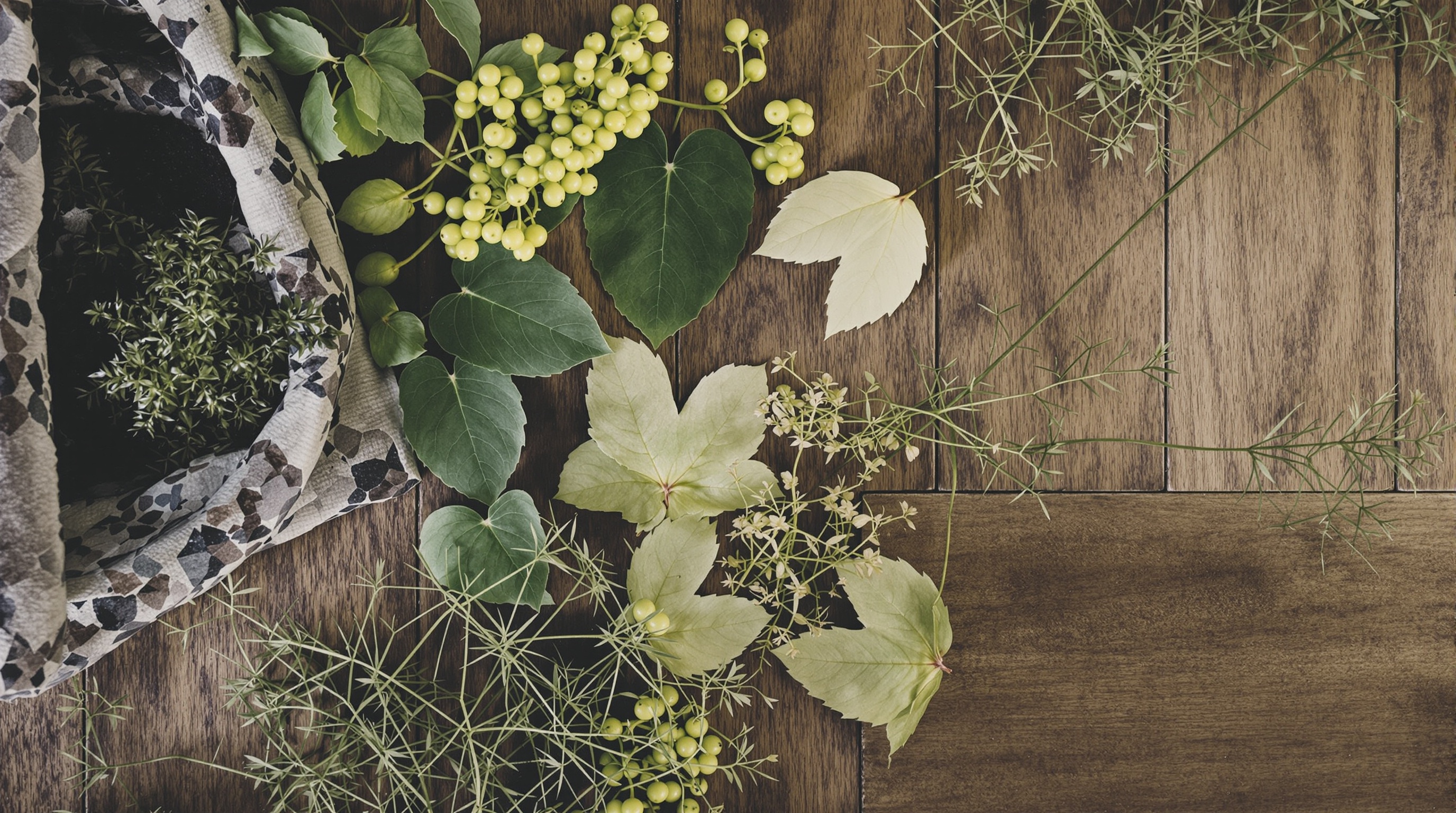Cultivated Living Blog: Embrace Intentional & Mindful Living
Explore The Cultivated Living Blog—your guide to intentional living, mindful routines, and seasonal harmony. Discover how to live with purpose through design, rituals, sustainability, and community.

The Cultivated Living Blog is your go-to space for exploring a holistic lifestyle rooted in intentionality, mindfulness, and seasonal harmony. Blending slow living, sustainable practices, and thoughtful design, this lifestyle blog inspires readers to embrace daily rituals, conscious consumption, and aesthetically simple spaces. Whether you're seeking ways to live more purposefully, connect with your environment, or start meaningful routines in the kitchen or home, this guide offers a complete framework for curating a balanced and beautiful life.
Foundations of Cultivated Living
Cultivated living is more than a lifestyle trend—it's a conscious commitment to living with intention, mindfulness, and harmony with one’s environment. Rooted in simplicity and self-awareness, this philosophy encourages individuals to engage deliberately with their surroundings, choices, and daily routines. Understanding the foundations of cultivated living provides a meaningful framework for anyone seeking a slower, more intentional life.
Core Philosophy
At its heart, cultivated living is about designing a life that reflects personal values and fosters well-being. It emphasizes intentionality over impulse, presence over productivity, and quality over quantity. The philosophy draws from mindfulness practices, minimalist design, and sustainable living principles, aiming to create a lifestyle that feels grounded and fulfilling.
Intentional Living
Intentional living is the cornerstone of cultivated living. It involves making conscious decisions that align with one’s values and long-term vision. This might show up in choosing ethically sourced products, creating daily rituals that support mental clarity, or reducing material clutter to make space for what truly matters. Rather than following external pressures or trends, intentional living asks, “What do I truly need to thrive?”
Connection to Environment
A cultivated life is deeply attuned to nature and place. In locations like Burlington, Vermont—where the natural world plays a central role in daily life—this connection is especially pronounced. Seasonal rhythms, local produce, and outdoor experiences shape routines and foster a harmonious relationship with the environment. Cultivated living encourages individuals to slow down and appreciate the beauty of their surroundings, whether through gardening, hiking, or simply observing the changing skies.
Mindful Consumption
One of the foundational elements of cultivated living is a mindful approach to consumption. This means purchasing and using goods with awareness—considering their origin, impact, and purpose. Whether it’s choosing sustainable fashion, cooking with locally sourced ingredients, or minimizing waste, mindful consumption supports both personal wellness and environmental responsibility.
Aesthetic Simplicity
A cultivated lifestyle often embraces aesthetic simplicity, favoring clean lines, natural materials, and calming color palettes. The goal is to create physical spaces that promote peace, clarity, and focus. This sensibility extends to everything from home design to the way meals are plated, reinforcing the idea that beauty and function can coexist in quiet elegance.
Community and Connection
Cultivated living also places value on meaningful relationships and community ties. It encourages nurturing connections with family, friends, and neighbors, as well as engaging with local traditions and businesses. In Burlington, for example, the farmer’s markets, small artisan shops, and seasonal festivals provide rich opportunities for authentic engagement and shared experiences.
Ritual and Routine
Daily rituals and routines form another foundation of cultivated living. These practices—whether it's a morning tea ceremony, journaling at sunset, or an evening walk—help anchor the day and bring mindfulness into ordinary moments. By creating rhythm and structure, they support emotional balance and a deeper awareness of time and place.
Personal Growth and Reflection
Living a cultivated life also involves continual self-reflection and growth. This may include journaling, meditation, or setting aside time for reading and personal development. The aim is to remain aligned with one’s evolving values and to approach life with curiosity and openness.
By embracing these foundational principles, individuals can craft a lifestyle that reflects thoughtfulness, balance, and authenticity—hallmarks of cultivated living.
Creating Intentional Spaces
Intentional spaces are at the heart of cultivated living. They support mindfulness, creativity, and a sense of purpose in daily life. Whether you're designing a kitchen for recipe exploration or a cozy corner for morning rituals, the way a space is arranged can significantly influence your behavior, mood, and well-being. Drawing from principles found in mindful living communities like those in Burlington, Vermont, the creation of intentional spaces merges aesthetics with function to support a sustainable and fulfilling lifestyle.
Designing with Purpose
Creating intentional spaces begins with clarity—understanding how you want to feel and what activities you want to support within the space. In the context of home cooking and recipe development, this could mean:
- Designing a kitchen that encourages ease of movement and access to tools.
- Organizing spices, utensils, and ingredients to inspire creativity and reduce stress.
- Incorporating natural materials and light to make the space more inviting and energizing.
Intentional design often prioritizes minimalism, not for aesthetic alone, but to eliminate distractions and promote focus on the task at hand—whether that’s preparing a nourishing meal or testing a new recipe.
Functional Aesthetics in the Kitchen
The kitchen is a prime example of where intentional space design supports cultivated living. A well-organized kitchen not only enhances functionality but also encourages regular use and reduces food waste. Key elements of intentional kitchen spaces include:
- Open shelving or transparent storage for visibility of ingredients.
- Zones for different tasks—prep, cooking, baking, and cleaning.
- Multi-functional furniture or tools that save space and reduce clutter.
In Burlington’s sustainable living communities, many kitchens reflect these principles by integrating reclaimed wood, energy-efficient appliances, and composting systems, which align with ethical and environmental values.
Rituals and Routines in Designed Spaces
Intentional spaces are not just about physical layout—they also support the cultivation of daily rituals. For example:
- A dedicated tea corner with a kettle, favorite mugs, and loose-leaf teas can encourage moments of mindfulness throughout the day.
- A reading nook with natural light and cozy textures may support daily journaling or recipe reflection.
- A prep station in the kitchen with chopping boards, knives, and bowls encourages mise en place, a foundational cooking practice that emphasizes readiness and organization.
These micro-environments within the home reinforce habits that align with a more thoughtful and present way of living.
Sustainability and Local Influence
Incorporating local craftsmanship and sustainable materials into space design is another key aspect of intentional living. In Vermont, this often means supporting local artisans, using locally sourced wood, and choosing eco-friendly finishes. These choices not only reduce environmental impact but also add a sense of place and connection to the community.
Intentional living also means designing for all seasons. In Burlington, where winters are long and cold, spaces are often created to be flexible—inviting natural light during darker months and supporting indoor rituals like baking or slow cooking that bring warmth and comfort.
Flexibility and Adaptability
Finally, intentional spaces are not fixed—they evolve with your needs. Whether you're adjusting your kitchen layout to accommodate a new dietary preference or creating space for a new hobby like fermenting or canning, the ability to adapt your environment ensures that it continues to serve your lifestyle.
In the spirit of cultivated living, these spaces are designed to grow with you, reflecting your values, supporting your goals, and enhancing your daily experiences.
Daily Practices and Rituals
Daily practices and rituals are at the heart of both recipe execution and the philosophy behind cultivated living. These routines not only bring structure and mindfulness to the kitchen but also enhance the overall culinary experience by aligning with intentional and sustainable living principles.
Morning Rituals in the Kitchen
The start of the day offers a natural opportunity to engage with food preparation in a mindful way. For many practicing cultivated living, morning rituals often begin with preparing a wholesome breakfast using local, seasonal ingredients. This may include:
- Brewing freshly ground coffee or steeping loose-leaf tea
- Creating a simple but nourishing meal like oatmeal with fresh fruit or homemade granola
- Reviewing the day’s meal plan or shopping list
- Taking a moment to express gratitude for the food and the act of cooking
These small acts help center the cook and set a tone of purposeful living that carries through the day.
Meal Planning as a Daily Ritual
Meal planning is not just a logistical task—it can be a reflective daily ritual. Cultivated living encourages a slow and intentional approach to food choices, and this begins with thinking ahead. Each day may involve:
- Reviewing what’s in the pantry or fridge
- Choosing recipes that align with seasonal availability
- Considering nutritional balance and dietary needs
- Writing notes or journaling about what worked well in past meals
Incorporating this into a daily routine fosters a deeper connection to the meals you prepare and consume.
Cooking with Presence
Whether you’re following a traditional family recipe or experimenting with a modern variation, cooking is more than a chore—it’s a form of meditation. Daily cooking practices in a cultivated lifestyle often include:
- Preparing mise en place (setting up ingredients before cooking) to create a smooth and focused process
- Using tactile engagement—chopping, kneading, stirring—as a way to be present in the moment
- Cooking without distractions such as phones or television
- Engaging all senses to appreciate the texture, aroma, and color of the ingredients
This mindful approach to cooking transforms everyday recipes into meaningful rituals.
Evening Wind-Down Through Food
Evenings offer an opportunity to slow down and reflect, often centered around the evening meal. Daily rituals might include:
- Setting the table with intention, perhaps with candles or seasonal elements
- Sharing a meal with family or friends to foster connection
- Cleaning the kitchen as a closing ritual, symbolizing the end of the day’s cycle
- Journaling or noting any ideas for future meals or recipe adjustments
These practices help reinforce the values of gratitude, connection, and mindfulness that are central to cultivated living.
Integrating Seasonal and Local Foods
A daily commitment to using seasonal and local foods enhances both the quality of meals and the rhythm of daily culinary rituals. This can involve:
- Visiting local markets or receiving farm CSA deliveries
- Adjusting recipes to reflect what's currently abundant
- Preserving seasonal ingredients for future use, such as fermenting vegetables or freezing herbs
These practices not only support sustainable agriculture but also connect the cook to the natural flow of the seasons, a key tenet of cultivated living.
Reference Practices from the Cultivated Living Blog
The Cultivated Living blog emphasizes the importance of integrating mindful rituals into everyday life, especially in the kitchen. Some recurring themes from the blog that support these daily culinary practices include:
- Creating a serene and functional kitchen space that invites daily use
- Emphasizing the joy of slow living through food
- Encouraging readers to explore their personal relationship with cooking
- Highlighting the value of seasonal rhythms and local community connections in meal preparation
By adopting these daily rituals, readers can transform recipe execution from a mechanical task into an experience of cultivated, intentional living.
Documenting the Journey
In the world of culinary exploration, documenting the recipe journey is more than just writing down ingredients and steps. It’s a process of capturing creativity, refining techniques, and preserving culinary experiences for future use and inspiration. Whether you’re a home cook experimenting with seasonal flavors or a professional chef curating a cookbook, proper documentation ensures that your culinary creations can be replicated, shared, and evolved over time.
The Importance of Recipe Journaling
Keeping a recipe journal is a foundational step in documenting your culinary journey. This practice not only helps track the evolution of a dish from concept to perfection but also serves as a personal archive of cooking milestones. A well-kept journal includes notes on ingredient substitutions, cooking times, temperature variations, and personal reflections. Over time, this collection becomes a valuable resource for refining techniques and rediscovering forgotten favorites.
Capturing Inspiration
In the spirit of a cultivated lifestyle, inspiration for recipes often stems from seasonal produce, local flavors, or memorable dining experiences. Documenting the source of your inspiration—whether it’s a trip to the Burlington Farmers Market or a family gathering—adds depth and meaning to your recipes. Including context such as the origin of a dish or the occasion it was created for enriches the narrative behind your culinary creations.
Photography and Visual Notes
Visual documentation plays a crucial role in recipe development. Photographs of each stage—from raw ingredients to the final plated dish—can guide future attempts and improve consistency. High-quality images also enhance recipe sharing, whether through a personal blog, social media, or a printed cookbook. For those embracing cultivated living, visual storytelling captures the essence of mindful cooking, seasonal aesthetics, and intentional presentation.
Digital Tools for Documentation
Modern tools make recipe documentation more accessible and efficient. Apps and platforms like Paprika, Evernote, and Notion allow cooks to organize, tag, and search for recipes with ease. These digital tools support multimedia inputs, such as photos, videos, and voice notes, making them ideal for capturing the full experience of recipe development. Cloud storage also ensures that your culinary records are safe, organized, and easily shareable.
Creating a Recipe Archive
A personal recipe archive is a curated collection of your culinary legacy. This can be in the form of a handwritten binder, a digital folder, or a published blog. Organizing your archive by theme (e.g., seasonal dishes, family favorites, or holiday meals) allows for easy access and planning. For practitioners of cultivated living, this archive can evolve into a reflection of intentional choices, sustainability, and personal growth through food.
Sharing the Journey
One of the most rewarding aspects of documenting your culinary path is sharing it with others. Whether it’s through a local community cookbook, a blog post inspired by life in Vermont, or a cooking workshop, shared recipes foster connection and cultural exchange. They also invite feedback, which is essential for growth and refinement. Cultivated living emphasizes community, and sharing your documented recipes can become a meaningful contribution to that collective experience.
Seasonal Living and Adaptation
Seasonal living is a core component of cultivated and intentional lifestyles. It involves aligning daily habits, food choices, and routines with the rhythms of nature. Embracing seasonal changes not only supports personal well-being but also fosters a deeper connection with the natural environment, especially in regions like Burlington, Vermont, where each season brings distinct shifts in climate, produce, and lifestyle.
Understanding Seasonal Rhythms
Living seasonally means being attuned to the natural cycles of the year—spring growth, summer abundance, autumn harvest, and winter rest. Each season invites a different pace and focus, encouraging mindfulness and fluidity in daily life. In spring, for example, renewal and light eating prevail, while autumn often centers around preservation and coziness. Recognizing these natural cues helps individuals create sustainable habits that support physical and mental health throughout the year.
Seasonal Eating and Cooking
One of the most accessible ways to practice seasonal living is through food. Seasonal eating involves choosing ingredients that are locally grown and harvested at their peak. This approach supports local farmers, reduces environmental impact, and enhances the nutritional value and flavor of meals.
- Spring: Think of tender greens, radishes, and asparagus—perfect for light salads and simple sautés.
- Summer: A time for tomatoes, berries, cucumbers, and grilling. Recipes tend to be fresh, raw, or lightly cooked to beat the heat.
- Autumn: Root vegetables, squash, and apples dominate. Cooking shifts toward roasting, baking, and preserving the harvest.
- Winter: Emphasis on hearty stews, grains, and storage crops like potatoes, onions, and cabbage.
Building a recipe collection that reflects these seasonal shifts promotes variety in the kitchen and encourages a deeper appreciation for the culinary calendar.
Adapting Routines to the Seasons
Seasonal adaptation extends beyond the kitchen. Daily routines, energy levels, and even home organization benefit from seasonal awareness. In cultivated living, routines are intentionally shifted to match the tone of the season:
- Spring: A time for decluttering, setting intentions, and exploring new projects.
- Summer: Focus on outdoor activities, social gatherings, and simplified cooking.
- Autumn: Embrace nesting, meal planning, and preparing for winter's slower pace.
- Winter: Prioritize rest, introspection, and comfort through warm spaces and nourishing food.
These shifts help maintain balance and prevent burnout by honoring the natural ebb and flow of energy throughout the year.
Seasonal Home and Space Design
In cultivated living, the home environment is also adapted with the seasons. Textiles, scents, and lighting change to support seasonal moods. For example:
- Spring and Summer: Light fabrics like linen, fresh floral arrangements, and increased natural light.
- Autumn and Winter: Cozy materials such as wool and flannel, warm lighting, and earthy scents like cinnamon and pine.
This practice fosters a dynamic living space that not only reflects but also enhances seasonal transitions, making the home a sanctuary of comfort and inspiration year-round.
Reference to Cultivated Living Blog Practices
The Cultivated Living blog frequently emphasizes the importance of seasonal awareness as a pillar of intentional living. Through curated recipes, mindful lifestyle tips, and visual storytelling, the blog encourages readers to align their lives more closely with the natural world. Whether it’s preserving summer peaches in mason jars or layering textures for a winter reading nook, the blog showcases how seasonal adaptation can be both practical and aesthetically fulfilling.
By embracing seasonal living, individuals can cultivate a life that feels more connected, grounded, and harmonious with the environment, no matter where they live.
Living a cultivated life is about more than habits—it’s a mindset of harmony, intention, and connection with self, space, and season. The Cultivated Living Blog invites you to slow down, simplify, and savor the things that truly matter. Whether you're redesigning your kitchen, starting a new morning ritual, or cooking with fresh local produce, each mindful choice helps you craft a more meaningful life. Begin your cultivated living journey today—one intentional moment at a time.




